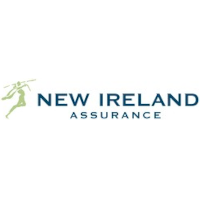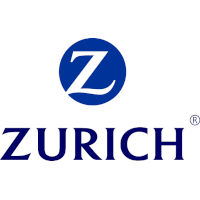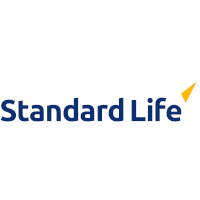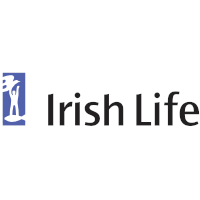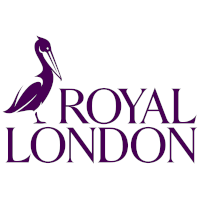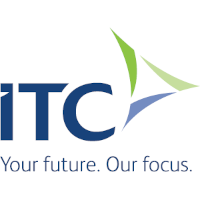Retirement Planning
Planning for Retirement can be as simple or as complex as you want and so can the type of pension fund and the benefits required . Allow us on your behalf to take the mystique out of an area that is clogged with jargon and red tape.
Are you are thinking of starting a Pension or maybe want to review the pension you’ve already built up. Through our association with various pension providers we can offer pensions that are flexible where you can start, stop, increase or reduce your payments at any time. To encourage you to save for your retirement Revenue allow you generous tax relief on your contributions and you can look forward to an substantial tax free lump sum when you retire. Income tax relief in Ireland is given at an individual’s marginal rate. This will either be 40% for a top rate tax payer or 20% for a standard rate. For example, investing €1,000 annually into a regular savings plan would cost you €1000 but putting the same amount into a pension plan could only cost you €800 if you are a standard rate tax payer or €600 if you are a top rate tax payer.
There are different types of funds that invest in asset classes such as :- equities ,property, bonds and cash . Multi asset funds are made up of a combination of different asset classes including the above and are designed with different asset allocations to create a range of low-to-high risk offerings. If you would like more choice you can build your own share portfolio or invest direct in property.
Through our association with the pension providers we can offer you choice of funds, flexibility and peace of mind to help build your nest egg for the future.
Advice is the most important aspect of Retirement Planning. We listen to our customers and focus more so on advice than products. We provide the technical knowledge and explain the detail in simple clear English to help make Retirement planning decisions easy to understand.
Pension Transfers
Revenue approved Buy Out Bond (BOB); also referred to as a Personal Retirement Bond (PRB) is designed to allow the “transfer-out” of your pension fund from a previous employers occupational pension schemes and into your own name. A BOB transfers total control and ownership of the pension fund to you and away from former employers/trustees. The BOB will provide pension benefits to you in the years ahead. Where the main employer sponsored occupational pension scheme is being wound up a buy-out-bond in your own name may also be set up.
Are you interested in starting your own pension?
How much money do I need for my Retirement years?
The answer is different for everyone. At what age do you want to retire? How much will your annual costs be at retirement?
Key steps in planning your retirement:
Have an understanding of the basics of investing ; savings like stocks, bonds or money market funds. Each one has their own risks and benefits . We will explain and help you understand the associated risks and rewards of such funds and how this is built into a well spread out portfolio of funds.
Avoid “Putting all your eggs in the one basket”! ….Have an investment plan that spreads your funds across various sectors with investment strategies that are unrelated to each other. Be aware of the level of risk associated of investing in the markets and that your funds may rise and fall in value. Longer term investing is about the time spent invested in the market over the years. It is not about trying to time the market.
- Focus on three key elements of an investment plan.
- When should I start saving?
- The amount I should save?
- What age do I want to retire?
Starting earlier can mean a more prosperous retirement.
- Annual review and update of your plan to ensure your investment strategy remains in tandem with your expectations & that you’re heading in the right direction for retirement.
Why we need to plan for retirement?
With higher inflation ; increased cost of living and getting older, the aim of an retirement plan is to guarantee independent financial security in retirement years.
When should you start?
It is never too late. The earlier the better as the compounding effect of regular saving and accumulated growth will help magnify your savings. As you approach retirement, you can switch your funds to more secure assets and ensure capital is preserved for your retirement years.
How do I plan my retirement?
Retirement is not an end, it is the start of something new. Visualise yourself in your retirement years ; what will it be like? Try to quantify how much you will require to support yourself. Be sure to factor in inflation.
Try to assess the amount you require annually and will this be covered by your present assets? This will assist in determining the shortfall you’ll need to plan for . Decide on the regular amount you can afford to set aside towards your retirement years .
We can guide you on funds that may be best suited taking into account your appetite/ attitude towards investment risk which we will access in detail. The older you are the less risk you may be willing to take! Hence the importance of incorporating lower risk instruments such as Government-backed securities and Corporate bonds into your pension funds.
What are the two main types of Employer retirement plans?
There are two main types of Employer sponsored occupational pension schemes provided by employers:
Defined Benefit (DB) Plans
Defined Contribution (DC) Plans
As the name suggests a defined benefits plan defines the amount of annual income you will receive at normal retirement age 65. If you are a member of a defined benefit pension then your employer manages an auto-enrolment providing benefits for you “the member“ at retirement. Employers contribute to the plan on behalf of you; “the member”, and some schemes allow the member to contribute also. The Employer must ensure the scheme has sufficient funds so pay members benefits once the employee retires.
A Defined Benefit (DB) pension sets out specific benefits that will be paid to you as a “retiree”. This calculation takes into account factors such as the number of years you worked and your salary . This then dictates the level of pension or , pension and lump sum that will be paid to you on retirement.
The main difference between (DB) scheme and a (DC) scheme is that a DB scheme promises a specific income payable at normal retirement age whereas benefits under a DC scheme depend on factors such as the amount you contribute over the years and the fund's investment performance.
Defined Contribution Plan
The amounts available to pay benefits at retirement or leaving service with your employer depend on the value of the investment fund accumulated for you as the “member”. There is no guarantee of any minimum benefit. Most employer sponsored occupational pension schemes and all personal pensions are defined contribution plans.
In a DC plan the employer or employee; or both, make contributions on a regular basis. Individual accounts are set up for participants and benefits are based on the amounts credited to these accounts plus any investment earnings on the funds invested . In retirement, the member can choose a regular income payment based on their retirement age and the length of service with the company. The benefit may factor in a spouses pension payable in the event of your demise. With regular employer and employee contributions your pension builds up over time and any growth on the fund accumulates tax-free whilst it remains in the fund. Unlike a defined benefits scheme there are no guarantees as to the amount the defined contributions plan will provide at retirement. Growth on the fund is dependent on the up’s and down of market return. The total fund accumulated will depend on how much was contributed into the scheme and how the investment fund has performed over the years. If you are not sure which scheme you are a member of then ask your HR /payroll team. Alternatively, please email us with a copy of your most recent members annual benefits statement and we can clarify this.
When can you drawdown on your pension?
The earliest you can start drawing down from your defined contribution pension is stated in the scheme rules (normally from age 50 onwards and where you are no longer employed by the employer who set up the scheme). If you are still in employment with the company then you must wait until you are age 60 before drawing down on your funds. Normal retirement age within occupational pension schemes is usually set at age 65 . You may able to get access to your pension earlier if you’re retiring due to serious ill health.
These are life changing decisions so do get financial advice about your personal or workplace pension and understand all your options. Any decisions you then make will sit more comfortably with you. It is worth seeking financial advice as it may save you money in the long term particularly as some pension decisions are a final decisions and cannot be reversed.
What are the options in drawing down your pension benefits?
You have a number of options for how to access funds within your pension as follows...
Within Revenue permitted limits you can draw-down part of; or all of your pension fund as part tax free and part taxable lump sum.
Buy an Annuity – This being a guaranteed regular income payable for your lifetime ...Note you may also draw down a tax free lump sum if choosing this option.
Drawdown 25% tax free cash from the pension fund ,leaving the remaining 75% balance invested over the years. Regular income withdrawals can be drawn down from your remaining fund as you choose.
A combination of the above options.
It’s important that you are aware of the tax position applying to each option.
Lump Sums
Where you have built up a maximum Revenue approved pension fund of 2M, you can draw-down the 1st €200,000 as tax-free cash and the next €300,000 taxable at 20%. You are liable to tax on the remaining 1.5M and is treated as income, taxed at the relevant income tax band. The overall maximum tax free cash allowable is 25% of your total pension up to a lifetime maximum Revenue limit of €200,000.
Buy an Annuity (Income for life)
When interest rates rise, higher guaranteed annuity rates provide a bigger annual pension and this choice may then be more attractive. An Annuity is a guaranteed annual income payable for your life-time . Alternatively you can draw down a maximum of 25% of your pension fund as a tax free lump sum and buy an annuity with the remainder.
There are many types of Annuities available and an “open market option” allows you to shop around between the pension providers to achieve the highest guaranteed annual rate of return and the most suitable annuity for your needs. These are available from companies such as (Zurich ,Irish Life ,AVIVA, Royal London ,Standard Life and New Ireland).
Remember …buying an Annuity is a “final decision “ and cannot be reversed whereas an Approved Retirement Fund (ARF) can be used to buy an Annuity at a later stage.
Income Drawdowns
Income drawdowns allow you to withdraw a regular income from your pension fund while the balance in your fund remains invested.
Pensions Options
You can initially drawdown part tax free cash and part taxable cash from your pension and then choose to buy a guaranteed Annuity anytime at a later date. However ; if you initially buy an Annuity with your pension fund then you cannot later choose to draw down any tax free or taxable cash from your pension.
When can I get State Pension?
There are two main types of State Pension – Contributory and Non-Contributory.
As the name suggests , the Contributory Pension is based on the number of contributions that you have paid during your working life. It is not means-tested and you can continue to earn other income. If you qualify, then the Government will pay you a weekly pension payment when you reach the State pension age. This provides a basic level of income to you in retirement.
State Contributory Pension is payable from age 66 providing you have paid the required amount of PRSI contributions (Pay Related Social Insurance) during your working life. The pension is taxable, however if it is your only source of income then you are unlikely to have to pay tax.
Non-Contributory State pension is paid to people who do not qualify for State Contributory Pension or who only qualify for a reduced contributory pension based on their PRSI contributions. The Non-Contributory State pension is means tested and is payable from age 66. Again the Non-Contributory pension is taxable but you are unlikely to pay tax if it is your only income.
For more information about State Pensions please go to Department of Social Protection website.
State Pension (Contributory)
Visit gov.ie for information.
What “Benefit Payments” are available to persons aged 65?
Benefit Payments may be paid to persons aged 65 who have ceased employment or to self-employ persons and who satisfy the pay-related social insurance (PRSI). These benefits may be payable up to your 66th birthday, on condition that you continue to satisfy the conditions for payment.
How do I qualify?
To qualify for ” Benefit Payment “ you must:
Be 65 years of age and have ceased Employment/self-employment
Be resident in the Republic of Ireland
Satisfy the (PRSI) contribution conditions ...(please refer to Department of Social Protection website to view their specific requirements for qualification)

